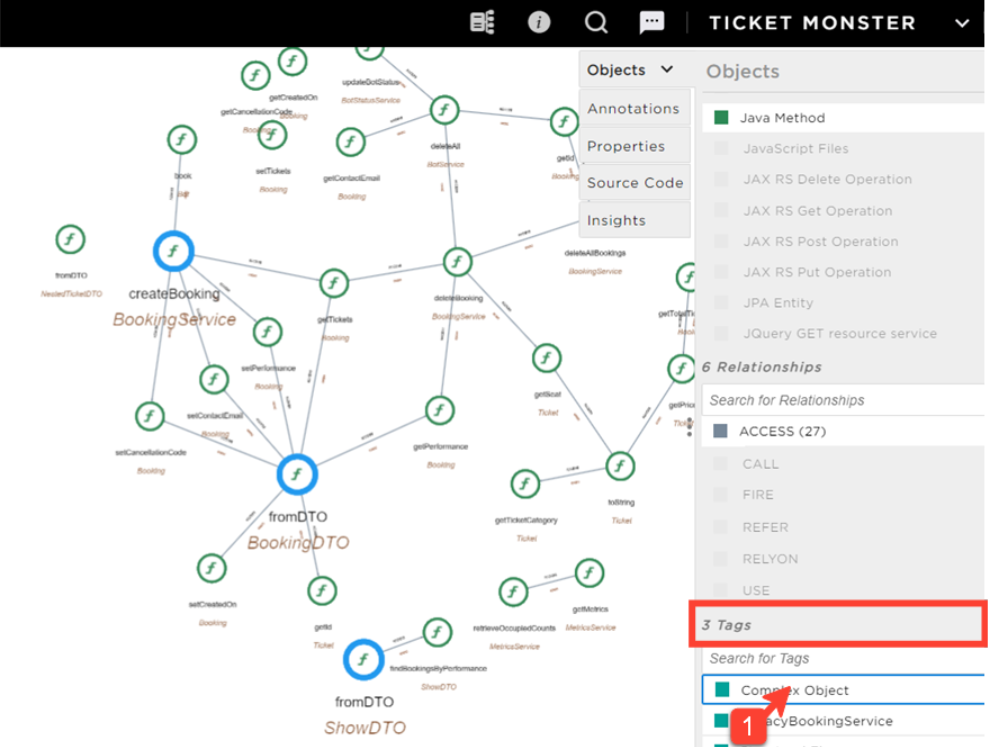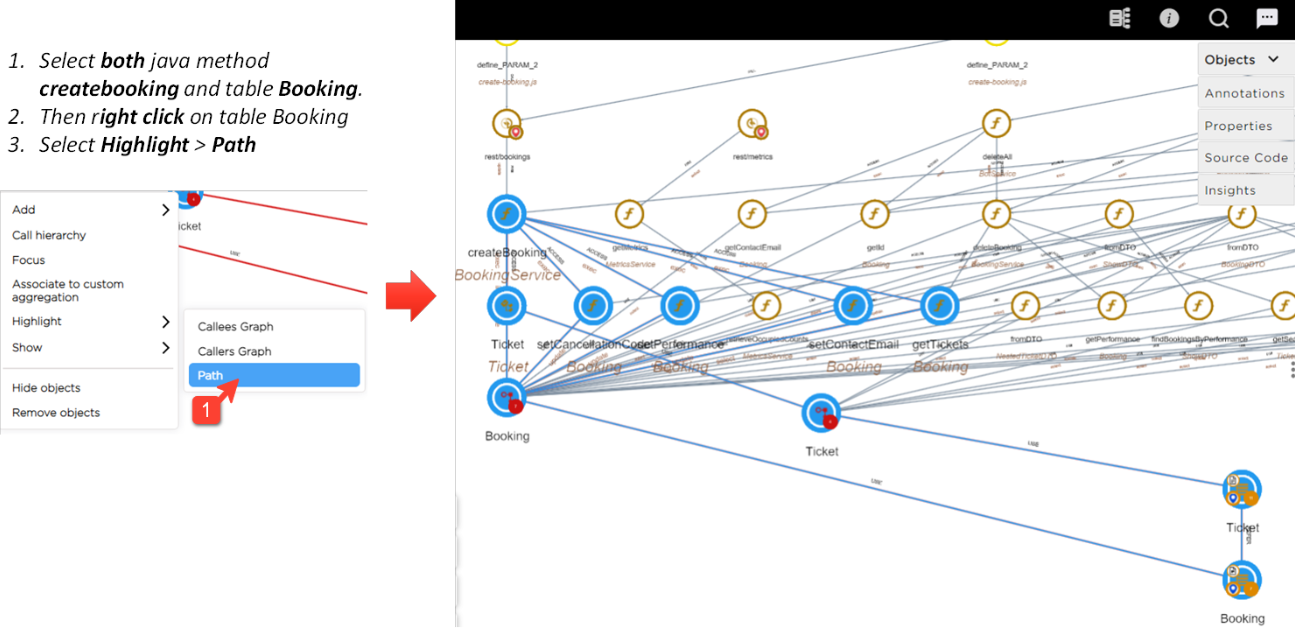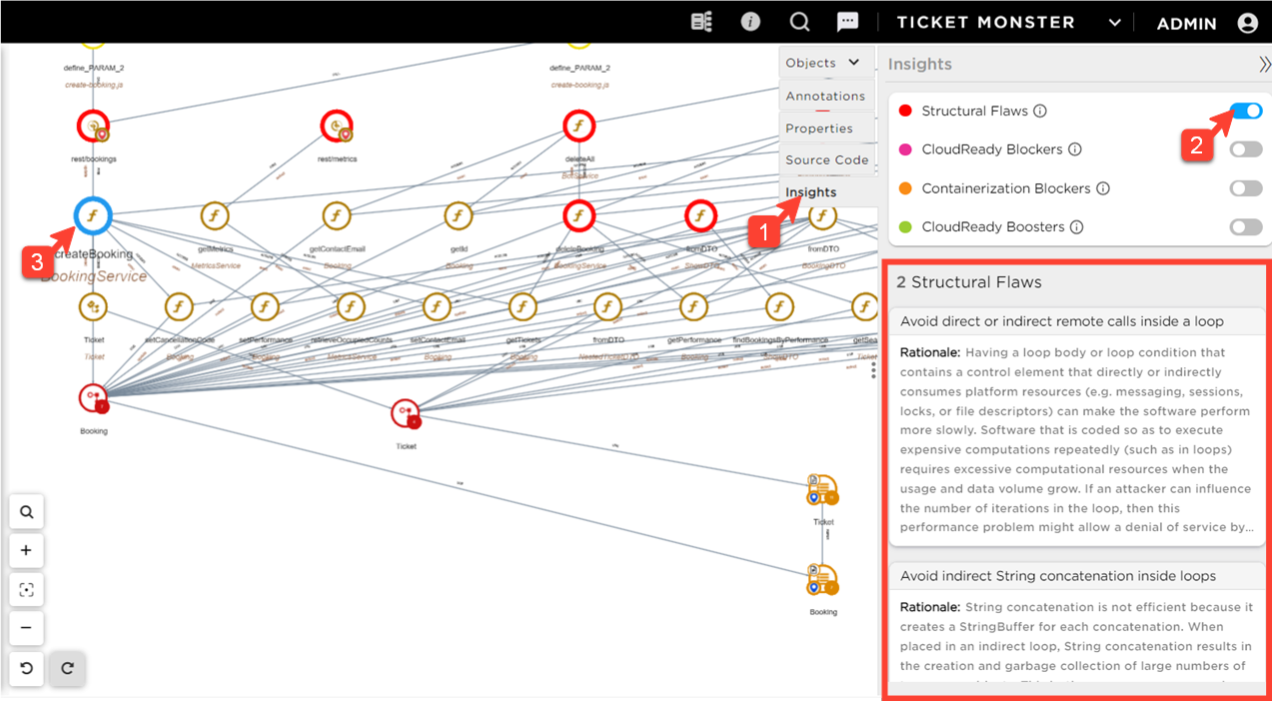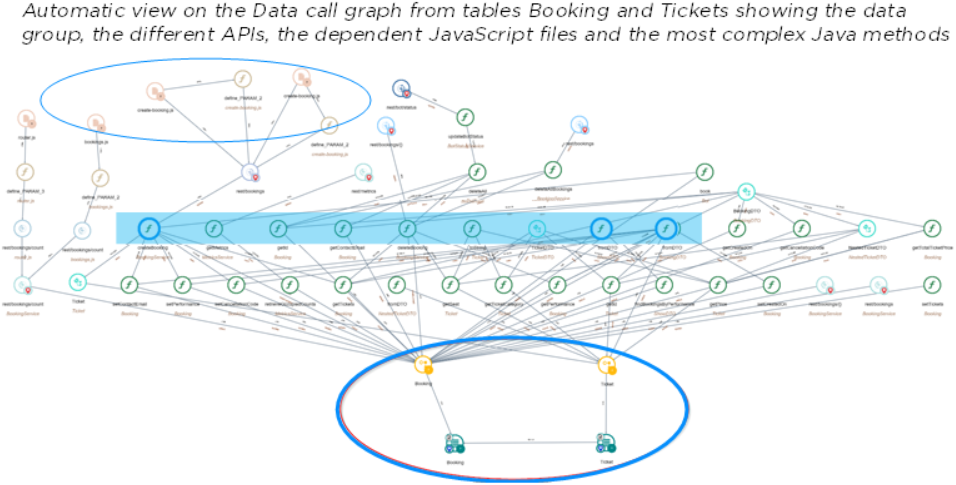Identify the Impact
Investigate the user-interfaces and implementation layer
User Interface
Use the right hand side menu to select the object types of the user-interface: JavaScript Files and functions, JAX RS Operations. You can easily check how many user interfaces will be impacted: those pages are used to create a booking and visualize the bookings.

Implementation layer
Select the object type Java Method in the right hand menu to focus the view.
CAST Imaging can highlight within the view the components that are the most complex (cyclomatic complexity) i.e., they are most likely implementing business functions.
Select the tag Complex Object in the right hand menu (bottom of the page). This will highlight the most complex methods on the view.

Identify components to rewrite
You can highlight the path between the business component and the data source and identify if it does insert/update data into the tables and list the key functions to be rewritten.
You can start with the Java Method createBooking that you have just identified as one of the most complex methods of the Booking table call graph.
Select all the object types to make them reappear on the view (right hand menu).
Select the Java Method createbooking then select the table Booking.
Finally, right click on Booking table and select Highlight > Path.

Pinpoint the structural flaws
Before rewriting the business logic in the new microservice, we can identify which improvements could be applied to the new service on its robustness, performance or security.
CAST Imaging provides an Insights view to immediately highlight components having structural flaws, i.e. critical violations to ISO-5055 best practices.
Click on the Insights part of the right hand menu and select Structural Flaws.
You can see which components are on the view and having critical violations to ISO-5055 best practices.
The Java method createBooking has 2 critical structural flaws impacting performance.

Summary
You have now gathered valuable insights on the micro-service candidate dealing with the Booking:
-
Identification of a data group: the Booking and Ticket tables have dependency through foreign key, they need to stay together in the microservice database.
-
Identification of services using the data group: JAX RS operations 4 GET, 1 POST, 2 DELETE, 1 PUT.
-
The Java Method createbooking holds the logic of the Booking functionality.
-
The JAX-RS POST operation bookings/ is the entry point of the Booking functionality.
Based on this investigation, a cost vs benefit analysis can be done for final decision making.
The above process would be repeated for each user-interface and critical implementation method found on the data group call path. CAST Imaging allows to perform the investigation by staying on a single view: the data call graph view of the table.
